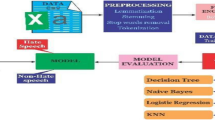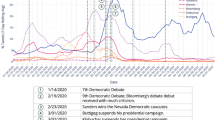Abstract
Social networks have become a major source of news with millions of people writing and trading news daily. At the occurrence of any event, news spread faster on social networks compared to other news sources, which makes them a good source for event identification. The most common approach for event detection from social networks is text analysis.In the case of a crisis, social media plays an important role in understanding the situation at the location of the crisis as the information is received directly from the affected people. If the collected information is used effectively this can minimize casualties and help in providing basic needs and medical attention. In this paper, we propose a hybrid approach that combines text analysis techniques and location identification to efficiently detect affected people. The addition of location information is done for the purpose of filtering out users writing about the crisis without being affected. The experimental results on Twitter data showed that the combination of text analysis and location yielded an accuracy of 96% as compared to 87% when using text analysis only.









Similar content being viewed by others
6.References
.Alkhameesand N, Fasli M (2016) Event detection from social network streams using frequent pattern mining with dynamic support values. In 2016 IEEE Int Conf Big Data, pp 1670–1679
Abdelhaq H, Sengstock C, Gertz M (2013) EvenTweet: online localized event detection from twitter. PVLDB 6(12):1326–1329
Alam F, Ofli F, Imran M (2020) Descriptive and visual summaries of disaster events using artificial intelligence techniques: case studies of Hurricanes Harvey, Irma, and Maria. Behav Information Technol 39(3):288–318
Burel G, Saif H, Fernandez M, Alani H (2017) On semantics and deep learning for event detection in crisis situations, in workshop on semantic deep learning (SemDeep) at ESWC,2017
Cherichiand S, Larodec R (2016) Using big data values to enhance social event detection pattern. In IEEE/ACS 13th Int Conf Comput Syst Appl (AICCSA) pp 1–8
Doua M, Gua Y, Xub G (2020), Social awareness of crisis events: A new perspective from social-physical network , Cities-The International Journal of Urban Policy and Planning.
Fan C, Jiang Y, Mostafavi A (2020) Social sensing in disaster citydigital twin: integrated textual–visual–geo framework for situational awareness during built environment disruptions. J Manage Eng 36(3):04020002. https://doi.org/10.1061/(ASCE)ME.1943-5479.0000745
Joshi A, Sparks R, McHugh J, Jamesa K, Karimi S, Paris C, MacIntyre CR (2020) Harnessing tweets for early detection of an acute disease event , the international society for environmental epidemiology (ISEE)
Kankanamge N, Yigitcanlara T, Goonetilleke A, Kamruzzaman Md (2020) Determining disaster severity through social media analysis: testing the methodology with south east Queensland Flood tweets. Int J Disaster Risk Reduction 42:101360
Kejriwal M, Gu Y (2018) A pipeline for post-crisis twitter data acquisition, in workshop on social web in emergency and disaster management 2018 at the ACM WSDM Conference
Khana SM, Chowdhurya M, Ngob Linh B, Aponc Amy (2020) Multi-class twitter data categorization and geocoding with a novel computing framework. Cities 96:102410. https://doi.org/10.1016/j.cities.2019.102410
Khare P, Fernandez M, Alani H (2017) Statistical semantic classification of crisis information. In: 1st workshop of hybrid statistical semantic understanding and emerging semantics (HSSUES), 16th international semantic web conference (ISWC) 2017, pp 21–22
Kshirsagar R, Morris R, Bowman S (2017) Detecting and explaining crisis, in proceedings of the fourth workshop on computational linguistics and clinical psychology-from linguistic signal to clinical reality, pp. 66–73, 2017.
Kuwertz A, Moll M, Sander J, Pickl S (2020) A Systemic Approach for Early Warning in Crisis Prevention and Management. In: Ahram T, Karwowski W, Pickl S, Taiar R (eds) Human systems engineering and design. advances in intelligent systems and computing. Springer, Cham
Lin J, Cromley RG (2018) Inferring the home locations of Twitter users based on the spatiotemporal clustering of twitter data. Transactions in GIS 22(1):82–97
Madichetty S, Sridevi M (2019) Disaster damage assessment from the tweets using the combination of statistical features and informative words. Soc. Netw. Anal. Min 9:42. https://doi.org/10.1007/s13278-019-0579-5
Kaufhold MA, Bayer M, Reuter C (2020) Rapid relevance classification of social media posts in disasters and emergencies: a system and evaluation featuring active, incremental and online learning. Inf Process Manage 57(1):102132. https://doi.org/10.1016/j.ipm.2019.102132
Nguyen DT, Jung JE (2017) Towards real-time event detection for online behavioral analysis on social big data. Future Generation Computer Systems 66(2017):137–145
Purohit H, Castillo C, Pandey R (2020) Ranking and grouping social media requests for emergency services using serviceability model. Soc Netw Anal Min 10:22. https://doi.org/10.1007/s13278-020-0633-3
Ragini JR, Anand PMR, Bhaskar V (2018) Mining crisis information: a strategic approach for detection of people at risk through social media analysis. Int J Disaster Risk Reduct 27(2018):556–566
Sato K, Wang J, Cheng Z (2017) Design of a method to support twitter based event detection with heterogeneous data resources. In 2017 IEEE 8th Int Conf Aware Sci Technol (iCAST 2017), pp 348–354
Schempp T, Zhang H, Schmidt A, Hong M, Akerkar R (2019) A framework to integrate social media and authoritative data for disaster relief detection and distribution optimization. Int J. Disaster Risk Reduct 39(2019):1–10
Shi L, Liu L, Wu Y, Jiang L, Hardy J (2017) Event detection and user interest discovering in social media data streams. In IEEE access. Vol 5
Soares VHA, Campello RJGB, Nourashrafeddin S, Milios E, Naldi MC (2019) Combining semantic and term frequency similarities for text clustering. Knowl Information Syst 61(3):1485–1516
Tang H, Zhao X, Ren Y (2019) A multilayer recognition model for twitter user geolocation. Wireless Netw 25:1–6. https://doi.org/10.1007/s11276-018-01897-1
Wang RQ, Mao H, Wang Y, Rae C, Shaw W (2018) Hyper-resolution monitoring of urban flooding with social media and crowdsourcing data. Comput Geosci 111(2):139–147
Wani S, Yadav D, Verma OP (2020) Development of disaster management and awareness system using Twitter analysis: a case study of 2018 Kerala floods. Adv Intell Syst Comput 1053:1165–1174. https://doi.org/10.1007/978-981-15-0751-9_107
Wei H, Sankaranarayanan J, Samet H (2018) Enhancing local live tweet stream to detect news. In proceedings of 2nd ACM SIGSPATIAL workshop on analytics for local events and news (LENS’18) pp 1–10
Zahra K, Imran M, Ostermann FO (2020) Automatic identification of eyewitness messages on twitter during disasters. Inf Process Manage 57(1):102107
Zhang C, Lei D, Yuan Q, Zhuang H, Kaplan L, Wang S, Han J (2018) GeoBurst+: effective and real-time local event detection in geo-tagged tweet streams. ACM Trans. Intell. Syst. Technol (TIST). 9(3):1–24
Author information
Authors and Affiliations
Corresponding author
Additional information
Publisher's Note
Springer Nature remains neutral with regard to jurisdictional claims in published maps and institutional affiliations.
Rights and permissions
About this article
Cite this article
Karam, E., Hussein, W. & Gharib, T.F. Integrating location and textual information for detecting affected people in a crisis. Soc. Netw. Anal. Min. 11, 5 (2021). https://doi.org/10.1007/s13278-020-00715-x
Received:
Revised:
Accepted:
Published:
DOI: https://doi.org/10.1007/s13278-020-00715-x




